How to calibrate dairy parlour feeders and cut costs
Routine calibration of feed-to-yield parlour feeders can help drive down concentrate costs or increase milk yields on dairy farms.
Feed can account for 40% of total costs, yet calibration is a job that is often overlooked.
Inaccurate feeders dispense more than a cow needs, adding to costs, or not enough, resulting in underperformance.
Each feeder should consistently feed an equal portion at a known amount, say Ed Goddard and Rachael Rees, of Pembrokeshire-based Dairycare, which operate parlour and farm equipment repairs.
“It is always important to get feed allocation right to get the best return on investment in feed. The payback is better use of feed, better production and better fertility. The time taken to get this job done is a small cost compared with the benefit,” says Mr Goddard.
See also: Guide to water heating options for your dairy parlour
It takes less than an hour to calibrate feeders and is a simple job that farmers can do themselves. Below, they explain how:
Step one
The only equipment needed for calibration is a bucket, a set of accurate digital scales that give weight in grams, and a calculator.
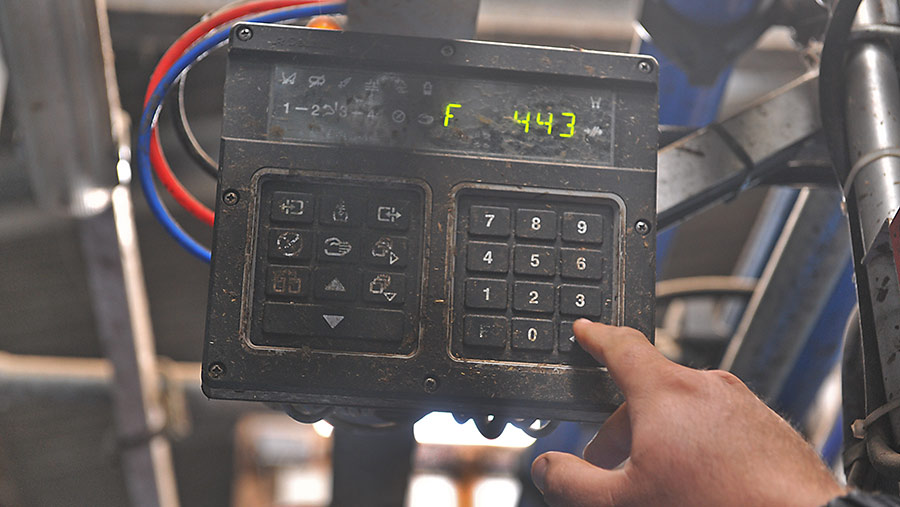
Input calibration portion drop and press send
Step two
At the milk control point, input the code for a portion drop – do this three times to dispense three portions.
Mr Goddard says a three-portion drop works best, but you can drop as many portions as you wish. Controllers vary, but each will activate a known drop portion.
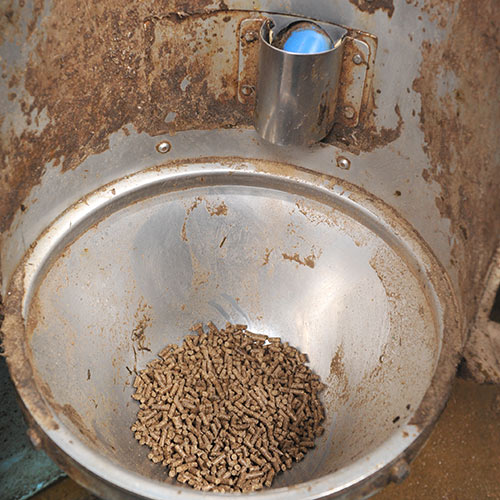
Empty three portions into feeder
Step three
Sit the bucket on the scales and set the reading to zero.
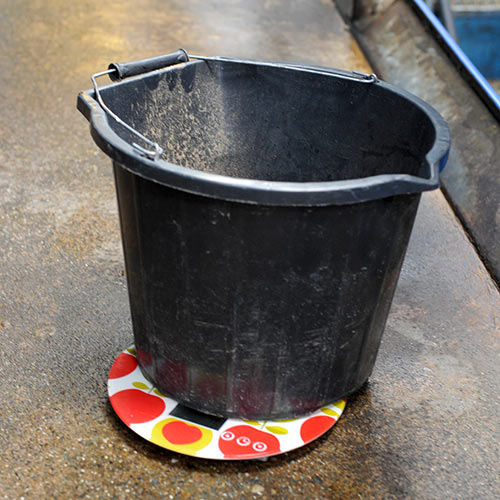
zero bucket on scale
Step four and five: Scoop the three portions of cake out of the feeder and place in the bucket. Weigh the portion and divide the result by three to ascertain the weight of an individual portion – how does this compare to the expected weight?
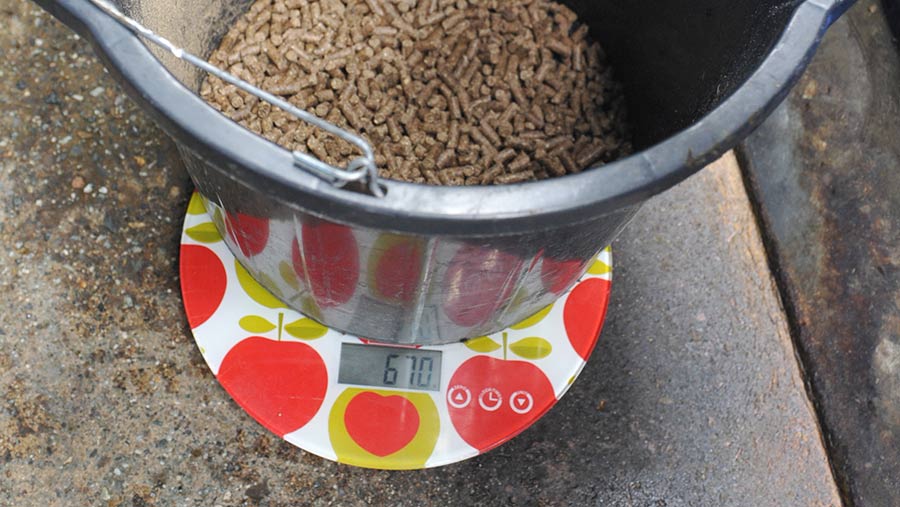
Weigh feed’
Step six
Key the weights for each stall into the computer that has the parlour software installed.
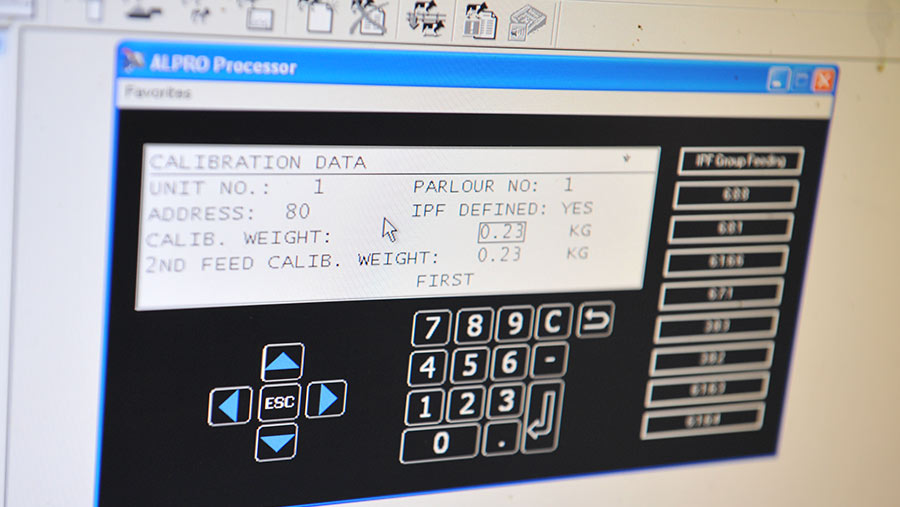
Input data into computer
Tips for accurate calibration
- Regular calibration is key to maintaining accuracy – older parlour feeders require more frequent checking and calibrating – ideally every month, or more often if the concentrates fed through them is changed.
- Ideally, calibrate every feeder individually, but if this isn’t achieved at each calibration, aim to get it done once a year.
- The density of feed varies and this can affect calibration – the gold standard is to calibrate when a fresh consignment is delivered, or at least every time the ration formulation changes. Soya is 33% denser than wheat flour and 5% denser than rape meal, so several small changes in formulation can significantly alter the volume of a kilogramme of cake.
- The density of organic cake is very different (organic cake is lighter) to that of conventional feed so feeders should always be calibrated if switching farming systems.
- Feed calibration could be either under or over, which could result in the daily total still being correct, because different inaccuracies balance each other out.
- It is important to check for wear and tear and build-up of debris in the feeder mechanism, hoppers and auger system – calibration will flag up partial blockages.
- If time is tight, ask your parlour consultant to include calibration in your regular parlour test.
- Consider adding calibration to your annual static or dynamic milking parlour test.
- Don’t forget to check the weigh cells of diet feeders too, as inaccuracies here can have a similar effect.
Case study: Tymeini Farm, near Haverfordwest
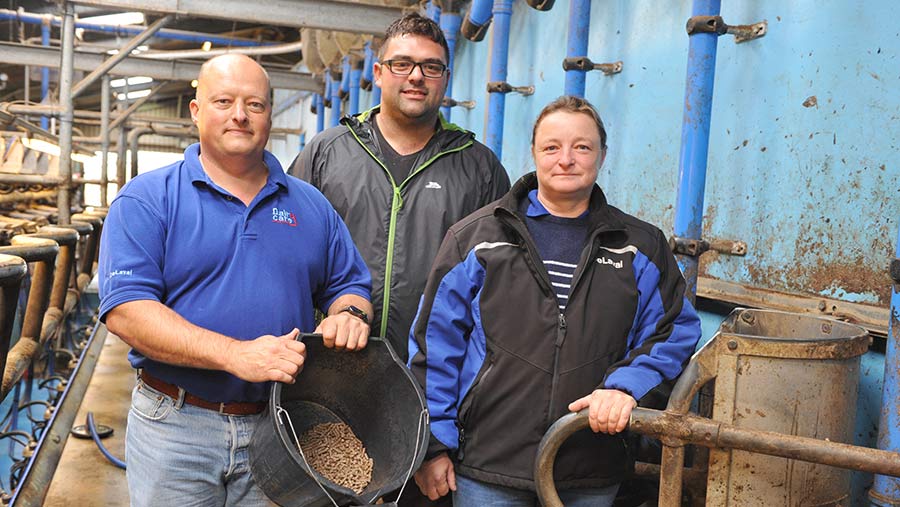
From left: Ed Goddard, Simon John and Rachel Rees
Feeding to yield is central to milk production at Tymeini Farm, near Haverfordwest.
A computerised feeder control unit was installed along with the 18/36 DeLaval parlour nine years ago, to allow feed to be delivered with greater precision.
But Simon John, who runs a herd of 280 cows at Tymeini with his father, Geraint, admits he has only calibrated the feeders once in those nine years, when the feed formulation changed.
Cows, which produce an annual milk yield average of 8,500 litres at 4.35% butterfat and 3.42% protein, are fed to a maximum of 5kg/milking.
When the feeders were recently tested by Mr Goddard, they were found to be dispensing 15g more cake/kg than they should have been.
“That doesn’t seem much, but it adds up to 150kg/day across the herd or 4.5t/month,” Mr Goddard points out.
With the business paying between £250-£280/t for cake, that is a minimum of £1,000 a month overspent on feed, or £12,000/year.
“Calibration is a job you don’t really think about, but when you see those figures in black and white, it is quite a shock,” Mr John admits.
